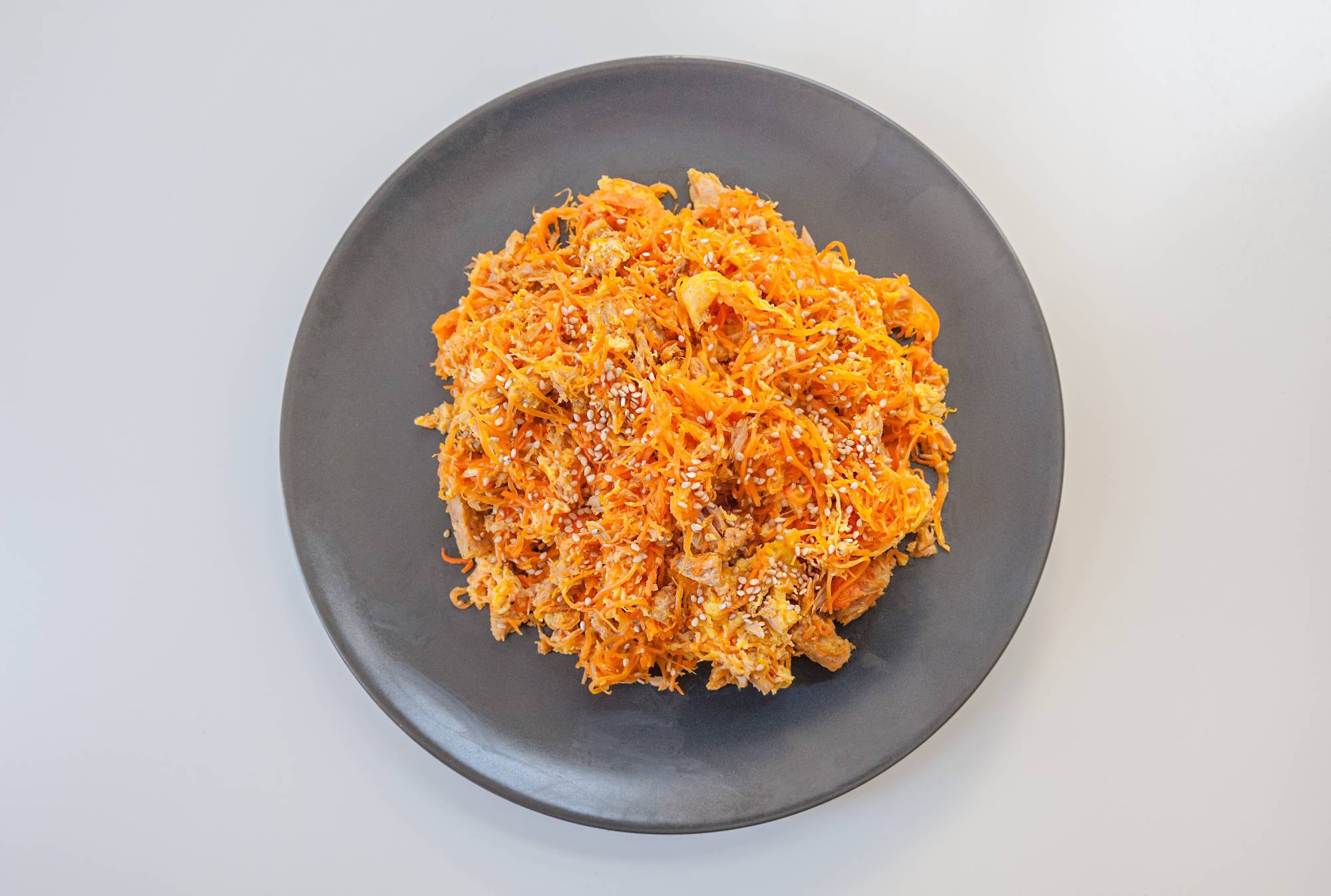The humble yet versatile ninjin (carrot) is thought to have arrived in Japan via China at some point in either the 16th or 17th century. The Japanese originally called it a “seri ninjin” (celery carrot) since, back then, the word “ninjin” was used to refer to ginseng root, which the carrot somewhat resembles.
However, the type of carrot that was grown here up until the Meiji Era (1868-1912) is now known as the red or Oriental carrot. Unlike its Western counterparts, the red carrot has, as its name suggests, a dark red color and is sweeter. It’s also harder to grow, which is why the orange Western types are what’s mainly consumed in Japan these days.
Carrots appear in all kinds of dishes that are popular in Japan, and the recipe featured here is a traditional one from Okinawa known as ninjin shiri-shiri (shredded carrot). It’s said that everyone in Okinawa has their own recipe for shiri-shiri, so consider this to be just one variation. The word “shiri-shiri” is Okinawan for “sengiri” (shredded) and there’s a theory that it is an ideophone derived from the “shiri shiri” sound that the carrots make on a shredder. It is a colorful side dish that works well in bento boxes, or you can increase the egg count and have it for breakfast instead.


















With your current subscription plan you can comment on stories. However, before writing your first comment, please create a display name in the Profile section of your subscriber account page.